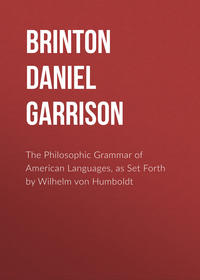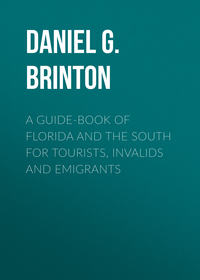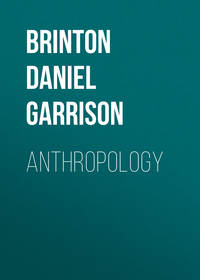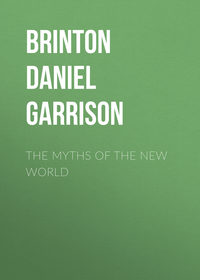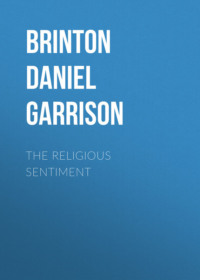
American Hero-Myths: A Study in the Native Religions of the Western Continent
From the earth the game was transferred to the heavens. As a ball, hit by a player, strikes the wall and then bounds back again, describing a curve, so the stars in the northern sky circle around the pole star and return to the place they left. Hence their movement was called The Ball-play of the Stars.[84]
A recent writer asserts that the popular belief of the Aztecs extended the figure to a greater game than this.[85] The Sun and Moon were huge balls with which the gods played an unceasing game, now one, now the other, having the better of it. If this is so, then the game between Tezcatlipoca and Quetzalcoatl is again a transparent figure of speech for the contest between night and day.
The Mexican tiger, the ocelotl, was a well recognized figure of speech, in the Aztec tongue, for the nocturnal heavens, dotted with stars, as is the tiger skin with spots.[86] The tiger, therefore, which destroyed the subjects of Quetzalcoatl–the swift-footed, happy inhabitants of Tula–was none other than the night extinguishing the rays of the orb of light. In the picture writings Tezcatlipoca appears dressed in a tiger's skin, the spots on which represent the stars, and thus symbolize him in his character as the god of the sky at night.
The apotheosis of Quetzalcoatl from the embers of his funeral pyre to the planet Venus has led several distinguished students of Mexican mythology to identify his whole history with the astronomical relations of this bright star. Such an interpretation is, however, not only contrary to results obtained by the general science of mythology, but it is specifically in contradiction to the uniform statements of the old writers. All these agree that it was not till after he had finished his career, after he had run his course and disappeared from the sight and knowledge of men, that he was translated and became the evening or morning star.[87] This clearly signifies that he was represented by the planet in only one, and that a subordinate, phase of his activity. We can readily see that the relation of Venus to the sun, and the evening and morning twilights, suggested the pleasing tale that as the light dies in the west, it is, in a certain way, preserved by the star which hangs so bright above the horizon.
§4. Quetzalcoatl as Lord of the Winds.
As I have shown in the introductory chapter, the Light-God, the Lord of the East, is also master of the cardinal points and of the winds which blow from them, and therefore of the Air.
This was conspicuously so with Quetzalcoatl. As a divinity he is most generally mentioned as the God of the Air and Winds. He was said to sweep the roads before Tlaloc; god of the rains, because in that climate heavy down-pours are preceded by violent gusts. Torquemada names him as "God of the Air," and states that in Cholula this function was looked upon as his chief attribute,[88] and the term was distinctly applied to him Nanihe-hecatli, Lord of the four Winds.
In one of the earliest myths he is called Yahualli ehecatl, meaning "the Wheel of the Winds,"[89] the winds being portrayed in the picture writing as a circle or wheel, with a figure with five angles inscribed upon it, the sacred pentagram. His image carried in the left hand this wheel, and in the right a sceptre with the end recurved.
Another reference to this wheel, or mariner's box, was in the shape of the temples which were built in his honor as god of the winds. These, we are informed, were completely circular, without an angle anywhere.[90]
Still another symbol which was sacred to him as lord of the four winds was the Cross. It was not the Latin but the Greek cross, with four short arms of equal length. Several of these were painted on the mantle which he wore in the picture writings, and they are occasionally found on the sacred jades, which bear other of his symbols.
This has often been made use of by one set of writers to prove that Quetzalcoatl was some Christian teacher; and by others as evidence that these native tales were of a date subsequent to the Conquest. But a moment's consideration of the meaning of this cruciform symbol as revealed in its native names shows where it belongs and what it refers to. These names are three, and their significations are, "The Rain-God," "The Tree of our Life," "The God of Strength."[91] As the rains fertilize the fields and ripen the food crops, so he who sends them is indeed the prop or tree of our subsistence, and thus becomes the giver of health and strength. No other explanation is needed, or is, in fact, allowable.
The winds and rains come from the four cardinal points. This fact was figuratively represented by a cruciform figure, the ends directed toward each of these. The God of the Four Winds bore these crosses as one of his emblems. The sign came to be connected with fertility, reproduction and life, through its associations as a symbol of the rains which restore the parched fields and aid in the germination of seeds. Their influence in this respect is most striking in those southern countries where a long dry season is followed by heavy tropical showers, which in a few days change the whole face of nature, from one of parched sterility to one of a wealth of vegetable growth.
As there is a close connection, in meteorology, between the winds and the rains, so in Aztec mythology, there was an equally near one between Quetzalcoatl, as the god of the winds, and the gods of rain, Tlaloc and his sister, or wife, or mother, Chalchihuitlicue. According to one myth, these were created by the four primeval brother-gods, and placed in the heavens, where they occupy a large mansion divided into four apartments, with a court in the middle. In this court stand four enormous vases of water, and an infinite number of very small slaves (the rain drops) stand ready to dip out the water from one or the other vase and pour it on the earth in showers.[92]
Tlaloc means, literally, "The wine of the Earth,"[93] the figure being that as man's heart is made glad, and his strength revived by the joyous spirit of wine, so is the soil refreshed and restored by the rains. Tlaloc tecutli, the Lord of the Wine of the Earth, was the proper title of the male divinity, who sent the fertilizing showers, and thus caused the seed to grow in barren places. It was he who gave abundant crops and saved the parched and dying grain after times of drought. Therefore, he was appealed to as the giver of good things, of corn and wine; and the name of his home, Tlalocan, became synonymous with that of the terrestrial paradise.
His wife or sister, Chalchihuitlicue, She of the Emerald Skirts, was goddess of flowing streams, brooks, lakes and rivers. Her name, probably, has reference to their limpid waters.[94] It is derived from chalchihuitl, a species of jade or precious green stone, very highly esteemed by the natives of Mexico and Central America, and worked by them into ornaments and talismans, often elaborately engraved and inscribed with symbols, by an art now altogether lost.[95] According to one myth, Quetzalcoatl's mother took the name of chalchiuitl "when she ascended to heaven;"[96] by another he was engendered by such a sacred stone;[97] and by all he was designated as the discoverer of the art of cutting and polishing them, and the patron deity of workers in this branch.[98]
The association of this stone and its color, a bluish green of various shades, with the God of Light and the Air, may have reference to the blue sky where he has his home, or to the blue and green waters where he makes his bed. Whatever the connection was, it was so close that the festivals of all three, Tlaloc, Chalchihuitlicue and Quetzalcoatl, were celebrated together on the same day, which was the first of the first month of the Aztec calendar, in February.[99]
In his character as god of days, the deity who brings back the diurnal suns, and thus the seasons and years, Quetzalcoatl was the reputed inventor of the Mexican Calendar. He himself was said to have been born on Ce Acatl, One Cane, which was the first day of the first month, the beginning of the reckoning, and the name of the day was often added to his own.[100] As the count of the days really began with the beginning, it was added that Heaven itself was created on this same day, Ce Acatl.[101]
In some myths Quetzalcoatl was the sole framer of the Calendar; in others he was assisted by the first created pair, Cipactli and Oxomuco, who, as I have said, appear to represent the Sky and the Earth. A certain cave in the province of Cuernava (Quauhnauac) was pointed out as the scene of their deliberations. Cipactonal chose the first name, Oxomuco the second, and Quetzalcoatl the third, and so on in turn.[102]
In many mythologies the gods of light and warmth are, by a natural analogy, held to be also the deities which preside over plenty, fertility and reproduction. This was quite markedly the case with Quetzalcoatl. His land and city were the homes of abundance; his people, the Toltecs, "were skilled in all arts, all of which they had been taught by Quetzalcoatl himself. They were, moreover, very rich; they lacked nothing; food was never scarce and crops never failed. They had no need to save the small ears of corn, so all the use they made of them was to burn them in heating their baths."[103]
As thus the promoter of fertility in the vegetable world, he was also the genius of reproduction in the human race. The ceremonies of marriage which were in use among the Aztecs were attributed to him,[104] and when the wife found she was with child it was to him that she was told to address her thanks. One of her relatives recited to her a formal exhortation, which began as follows:–
"My beloved little daughter, precious as sapphire and jade, tender and generous! Our Lord, who dwells everywhere and rains his bounties on whom he pleases, has remembered you. The God now wishes to give you the fruit of marriage, and has placed within you a jewel, a rich feather. Perhaps you have watched, and swept, and offered incense; for such good works the kindness of the Lord has been made manifest, and it was decreed in Heaven and Hell, before the beginning of the World, that this grace should be accorded you. For these reasons our Lord, Quetzalcoatl, who is the author and creator of things, has shown you this favor; thus has resolved He in heaven, who is at once both man and woman, and is known under the names Twice Master and Twice Mistress."[105]
It is recorded in the old histories that the priests dedicated to his service wore a peculiar head-dress, imitating a snail shell, and for that reason were called Quateczizque.[106] No one has explained this curiously shaped bonnet. But it was undoubtedly because Quetzalcoatl was the god of reproduction, for among the Aztecs the snail was a well known symbol of the process of parturition.[107]
Quetzalcoatl was that marvelous artist who fashions in the womb of the mother the delicate limbs and tender organs of the unborn infant. Therefore, when a couple of high rank were blessed with a child, an official orator visited them, and the baby being placed naked before him, he addressed it beginning with these words:–
"My child and lord, precious gem, emerald, sapphire, beauteous feather, product of a noble union, you have been formed far above us, in the ninth heaven, where dwell the two highest divinities. His Divine Majesty has fashioned you in a mould, as one fashions a ball of gold; you have been chiseled as a precious stone, artistically dressed by your Father and Mother, the great God and the great Goddess, assisted by their son, Quetzalcoatl."[108]
As he was thus the god on whom depended the fertilization of the womb, sterile women made their vows to him, and invoked his aid to be relieved from the shame of barrenness.[109]
In still another direction is this function of his godship shown. The worship of the genesiac principle is as often characterized by an excessive austerity as by indulgence in sexual acts. Here we have an example. Nearly all the accounts tell us that Quetzalcoatl was never married, and that he held himself aloof from all women, in absolute chastity. We are told that on one occasion his subjects urged upon him the propriety of marriage, and to their importunities he returned the dark answer that, Yes, he had determined to take a wife; but that it would be when the oak tree shall cast chestnuts, when the sun shall rise in the west, when one can cross the sea dry-shod, and when nightingales grow beards.[110]
Following the example of their Master, many of the priests of his cult refrained from sexual relations, and as a mortification of the flesh they practiced a painful rite by transfixing the tongue and male member with the sharp thorns of the maguey plant, an austerity which, according to their traditions, he was the first to institute.[111] There were also in the cities where his special worship was in vogue, houses of nuns, the inmates of which had vowed perpetual virginity, and it was said that Quetzalcoatl himself had founded these institutions.[112]
His connection with the worship of the reproductive principle seems to be further indicated by his surname, Ce acatl. This means One Reed, and is the name of a day in the calendar. But in the Nahuatl language, the word acatl, reed, cornstalk, is also applied to the virile member; and it has been suggested that this is the real signification of the word when applied to the hero-god. The suggestion is plausible, but the word does not seem to have been so construed by the early writers. If such an understanding had been current, it could scarcely have escaped the inquiries of such a close student and thorough master of the Nahuatl tongue as Father Sahagun.
On the other hand, it must be said, in corroboration of this identification, that the same idea appears to be conveyed by the symbol of the serpent. One correct translation of the name Quetzalcoatl is "the beautiful serpent;" his temple in the city of Mexico, according to Torquemada, had a door in the form of a serpent's mouth; and in the Codex Vaticanus, No. 3738, published by Lord Kingsborough, of which we have an explanation by competent native authority, he is represented as a serpent; while in the same Codex, in the astrological signs which were supposed to control the different parts of the human body, the serpent is pictured as the sign of the male member.[113] This indicates the probability that in his function as god of reproduction Quetzalcoatl may have stood in some relation to phallic rites.
This same sign, Ce Coatl, One Serpent, used in their astrology, was that of one of the gods of the merchants, and apparently for this reason, some writers have identified the chief god of traffic, Yacatecutli (God of Journeying), with Quetzalcoatl. This seems the more likely as another name of this divinity was Yacacoliuhqui, With the End Curved, a name which appears to refer to the curved rod or stick which was both his sign and one of those of Quetzalcoatl.[114] The merchants also constantly associated in their prayers this deity with Huitzilopochtli, which is another reason for supposing their patron was one of the four primeval brothers, and but another manifestation of Quetzalcoatl. His character, as patron of arts, the model of orators, and the cultivator of peaceful intercourse among men, would naturally lend itself to this position.
But Quetzalcoatl, as god of the violent wind-storms, which destroy the houses and crops, and as one, who, in his own history, was driven from his kingdom and lost his all, was not considered a deity of invariably good augury. His day and sign, ce acatl, One Reed, was of bad omen. A person born on it would not succeed in life.[115] His plans and possessions would be lost, blown away, as it were, by the wind, and dissipated into thin air.
Through the association of his person with the prying winds he came, curiously enough, to be the patron saint of a certain class of thieves, who stupefied their victims before robbing them. They applied to him to exercise his maleficent power on those whom they planned to deprive of their goods. His image was borne at the head of the gang when they made their raids, and the preferred season was when his sign was in the ascendant.[116] This is a singular parallelism to the Aryan Hermes myth, as I have previously observed (Chap. I).
The representation of Quetzalcoatl in the Aztec manuscripts, his images and the forms of his temples and altars, referred to his double functions as Lord of the Light and the Winds.
He was not represented with pleasing features. On the contrary, Sahagun tells us that his face, that is, that of his image, was "very ugly, with a large head and a full beard."[117] The beard, in this and similar instances, was to represent the rays of the sun. His hair at times was also shown rising straight from his forehead, for the same reason.[118]
At times he was painted with a large hat and flowing robe, and was then called "Father of the Sons of the Clouds," that is, of the rain drops.[119]
These various representations doubtless referred to him at different parts of his chequered career, and as a god under different manifestations of his divine nature. The religious art of the Aztecs did not demand any uniformity in this respect.
§5. The Return of Quetzalcoatl.
Quetzalcoatl was gone.
Whether he had removed to the palace prepared for him in Tlapallan, whether he had floated out to sea on his wizard raft of serpent skins, or whether his body had been burned on the sandy sea strand and his soul had mounted to the morning star, the wise men were not agreed. But on one point there was unanimity. Quetzalcoatl was gone; but he would return.
In his own good time, in the sign of his year, when the ages were ripe, once more he would come from the east, surrounded by his fair-faced retinue, and resume the sway of his people and their descendants. Tezcatlipoca had conquered, but not for aye. The immutable laws which had fixed the destruction of Tollan assigned likewise its restoration. Such was the universal belief among the Aztec race.
For this reason Quetzalcoatl's statue, or one of them, was in a reclining position and covered with wrappings, signifying that he was absent, "as of one who lays him down to sleep, and that when he should awake from that dream of absence, he should rise to rule again the land."[120]
He was not dead. He had indeed built mansions underground, to the Lord of Mictlan, the abode of the dead, the place of darkness, but he himself did not occupy them.[121] Where he passed his time was where the sun stays at night. As this, too, is somewhere beneath the level of the earth, it was occasionally spoken of as Tlillapa, The Murky Land,[122] and allied therefore to Mictlan. Caverns led down to it, especially one south of Chapultepec, called Cincalco, "To the Abode of Abundance," through whose gloomy corridors one could reach the habitation of the sun and the happy land still governed by Quetzalcoatl and his lieutenant Totec.[123]
But the real and proper names of that land were Tlapallan, the Red Land, and Tizapan, the White Land, for either of these colors is that of the sun-light.[124]
It was generally understood to be the same land whence he and the Toltecs had come forth in ancient times; or if not actually the same, nevertheless, very similar to it. While the myth refers to the latter as Tlapallan, it speaks of the former as Huey Tlapallan, Old Tlapallan, or the first Tlapallan. But Old Tlapallan was usually located to the West, where the sun disappears at night;[125] while New Tlapallan, the goal of Quetzalcoatl's journey, was in the East, where the day-orb rises in the morning. The relationship is obvious, and is based on the similarity of the morning and the evening skies, the heavens at sunset and at sunrise.
In his capacity as master of arts, and, at the same time, ruler of the underground realm, in other words, as representing in his absence the Sun at night, he was supposed to preside over the schools where the youth were shut up and severely trained in ascetic lives, previous to coming forth into the world. In this function he was addressed as Quetzalcoatl Tlilpotonqui, the Dark or Black Plumed, and the child, on admittance, was painted this color, and blood drawn from his ears and offered to the god.[126] Probably for the same reason, in many picture writings, both his face and body were blackened.
It is at first sight singular to find his character and symbols thus in a sense reversed, but it would not be difficult to quote similar instances from Aryan and Egyptian mythology. The sun at night was often considered to be the ruler of the realm of the dead, and became associated with its gloomy symbolism.
Wherever he was, Quetzalcoatl was expected to return and resume the sceptre of sovereignty, which he had laid down at the instigation of Tezcatlipoca. In what cycle he would appear the sages knew not, but the year of the cycle was predicted by himself of old.
Here appears an extraordinary coincidence. The sign of the year of Quetzalcoatl was, as I have said, One Reed, Ce Acatl. In the Mexican calendar this recurs only once in their cycle of fifty-two years. The myth ran that on some recurrence of this year his arrival was to take place. The year 1519 of the Christian era was the year One Reed, and in that year Hernan Cortes landed his army on Mexican soil!
The approach of the year had, as usual, revived the old superstition, and possibly some vague rumors from Yucatan or the Islands had intensified the dread with which the Mexican emperor contemplated the possible loss of his sovereignty. Omens were reported in the sky, on earth and in the waters. The sages and diviners were consulted, but their answers were darker than the ignorance they were asked to dispel. Yes, they agreed, a change is to come, the present order of things will be swept away, perhaps by Quetzalcoatl, perhaps by hideous beings with faces of serpents, who walk with one foot, whose heads are in their breasts, whose huge hands serve as sun shades, and who can fold themselves in their immense ears.[127]
Little satisfied with these grotesque prophecies the monarch summoned his dwarfs and hunchbacks–a class of dependents he maintained in imitation of Quetzalcoatl–and ordered them to proceed to the sacred Cave of Cincalco.
"Enter its darknes," he said, "without fear. There you will find him who ages ago lived in Tula, who calls himself Huemac, the Great Hand.[128] If one enters, he dies indeed, but only to be born to an eternal life in a land where food and wine are in perennial plenty. It is shady with trees, filled with fruit, gay with flowers, and those who dwell there know nought but joy. Huemac is king of that land, and he who lives with him is ever happy."
The dwarfs and hunchbacks departed on their mission, under the guidance of the priests. After a time they returned and reported that they had entered the cave and reached a place where four roads met. They chose that which descended most rapidly, and soon were accosted by an old man with a staff in his hand. This was Totec, who led them to his lord Huemac, to whom they stated the wish of Montezuma for definite information. The reply was vague and threatening, and though twice afterwards the emperor sent other embassies, only ominous and obscure announcements were returned by the priests.[129]
Clearly they preferred to be prophets of evil, and quite possibly they themselves were the slaves of gloomy forebodings.
Dissatisfied with their reports, Montezuma determined to visit the underground realm himself, and by penetrating through the cave of Cincalco to reach the mysterious land where his attendants and priests professed to have been. For obvious reasons such a suggestion was not palatable to them, and they succeeded in persuading him to renounce the plan, and their deceptions remained undiscovered.
Their idle tales brought no relief to the anxious monarch, and at length, when his artists showed him pictures of the bearded Spaniards and strings of glittering beads from Cortes, the emperor could doubt no longer, and exclaimed: "Truly this is the Quetzalcoatl we expected, he who lived with us of old in Tula. Undoubtedly it is he, Ce Acatl Inacuil, the god of One Reed, who is journeying."[130]
On his very first interview with Cortes, he addressed him through the interpreter Marina in remarkable words which have been preserved to us by the Spanish conqueror himself. Cortes writes:–



